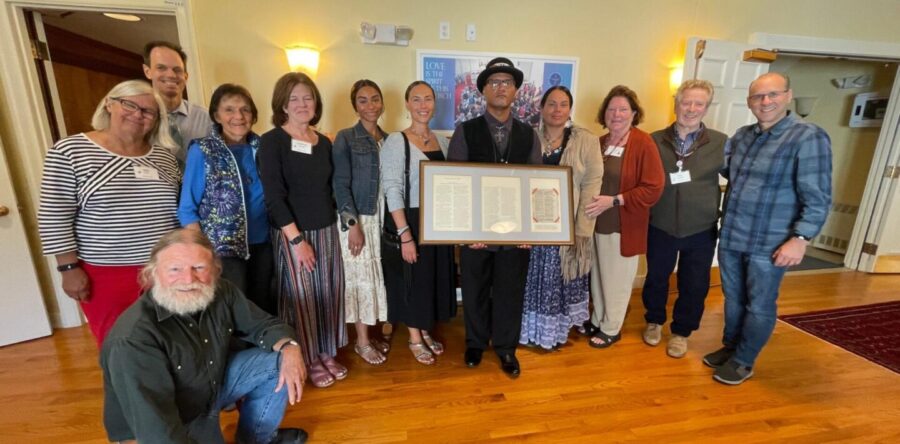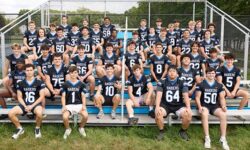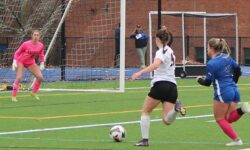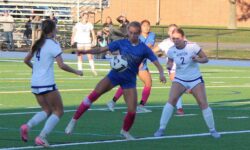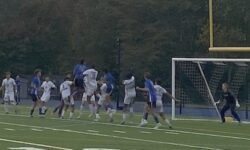By Douglas Brown
Community Contributor
Last week, I wrote about two individuals in the 17th Century – Roxbury Minister John Eliot and Massachusetts Bay government official Daniel Gookin - who worked together to establish villages throughout the Massachusetts Bay Colony for the “Praying Indians” - the name given to those Native Americans who chose to practice a Christian way of life. The most famous of these praying towns was three miles down the road in South Natick.
In order to teach the Praying Indians the lessons of the bible, Eliot worked for 14 years to translate the bible into the Massachusett language. The Eliot Indian Bible was printed in 1663 and it was the first Bible printed in America and the first to be translated into a Native American language. It remains one of the rarest and most cherished books in America.
Eliot deserves enormous credit for this pioneering work. But two Native Americans who were instrumental in the project are woefully underrepresented in the story.
The first is a man named Job Nesuton. He served as the primary translator for Eliot and worked with him for years. The other is James Printer, who became well educated at an English preparatory school in Massachusetts, apprenticed to a Cambridge printer, and worked at the Harvard printing press. Because he was bilingual, he likely set most of the type for the bible. The Eliot Indian Bible never would have happened without the extraordinary contributions of Nesuton and Printer.
Now our story takes a sad turn. Not long after the bible was published, the colonies were thrown into chaos. A war broke out between the English and the Native Americans. It was called King Philip’s War and thousands of lives were lost and many towns were burned, including Medfield during one infamous raid in February of 1676. The Praying Indians were caught in the middle, as they were unfairly attacked and mistrusted by both sides. They were rounded up and taken away from their villages and sent to Deer Island in Boston Harbor where many would die from starvation and exposure to the bitter cold. And virtually all of the Eliot Indian Bibles were destroyed in the war.
After the war, some of the Praying Indians who survived came back to their village in Natick to try to rebuild their lives. It was enormously difficult for them, given the trauma they experienced and the loss of their loved ones. But they carried on. And this is where Sherborn enters their story.
Our earlier friend and government official Daniel Gookin, who helped to establish the Praying Towns, had a son who grew up to be a Minister. That son (also named Daniel Gookin) became the first Minister of Sherborn’s first Church (now the Unitarian Universalist Area Church at First Parish), which was just getting established shortly after the war.
Because Daniel Gookin, the younger, shared his father’s affection for the Natick Praying Indians, he would travel to Natick to preach to the them once a month. And members of the Sherborn Congregation would go with him! How do we know this? Remarkably, there is a letter that still exists from John Eliot to his sponsors in England, dated April 22, 1684. The purpose of the letter was to let his English sponsors know of the state of the Praying Indians in the colonies and the progress of his work. Eliot writes that Major Gookin hath dedicated his eldest son, Mr. Daniel Gookin, unto this service of Christ; he is a pious and learned young man, about thirty-three years old … he is a man, whose abilities are above exception, though not above envy. His father, with his inclination, advised him to Sherburne, a small village near Natick, whose meeting-house is about three miles, more or less, from Natick meeting-house. Mr. Gookin holdeth a lecture in Natick meeting-house once a month; which lecture, many English, especially of Sherburne, do frequent. He first preacheth in English, to the English audience, and then the same matter is delivered to the Indians, by an interpreter, whom, with much pains, Mr. Gookin hath fore-prepared. We apprehend, that this will (by God’s blessing) be a means to enable the Indians to understand religion preached in the English tongue, and will much further Mr. Gookin in learning the Indian tongue.
In 1680, a few years before this letter was written, a new edition of the Eliot Indian Bible was printed. Reverend Daniel Gookin almost certainly would have used one of these new editions in his services at Natick. And you can see one of these bibles today, as one of the few copies still in existence is owned by and on display at the Natick History Museum in South Natick.
The Praying Indians from Natick and the other praying towns continue to live among us today as our neighbors and friends. And earlier this Fall, members of the Unitarian Universalist Area Church in Sherborn were blessed with a visit by four of them. These members were grieving the recent loss of their beautiful Mother, Sister, and Chief of their tribe, Chief Caring Hands. Several of us were privileged to be invited to share in their grief, learn about Chief Caring Hands and the incredible history of their tribe, and share stories with each other about our collective past. It was moving for all of us and we felt a deep connection to each other. We are excited to continue our dialogue together toward deeper understanding, and to nurture a strong friendship into the future.
And that “Eliot Street” sign in the center of Sherborn will never look quite the same again!
Next year, Sherborn will celebrate its 350th Anniversary. Many residents of our town are working tirelessly to create events for you to celebrate our rich history. As we all partake in that celebration, I hope we will also reflect on and honor the important roles played in that history by the indigenous peoples who lived on this land before us — including, most especially, the Natick Praying Indians.



